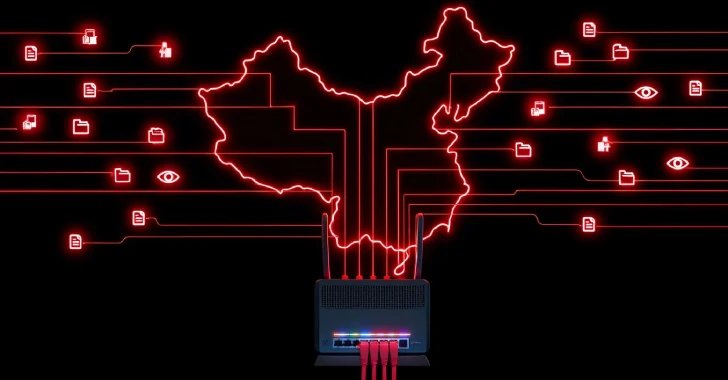Quick Takeaways
-
Discovery of Compromised Devices: Over 1,000 SOHO devices have been compromised by a cyber espionage campaign, codenamed LapDogs, linked to China-nexus hacking groups, with a significant presence in the U.S. and Southeast Asia.
-
Custom Backdoor Utilization: The campaign employs a backdoor named ShortLeash, which installs a fake web server and generates a self-signed TLS certificate to impersonate the L.A. Police Department, allowing for extensive control over the infected devices.
-
Deployment and Infections: Initial attacks began in September 2023, utilizing N-day vulnerabilities to infiltrate various devices, with evidence of distinct campaigns infecting up to 60 devices each, totaling 162 identified intrusion sets.
- Potential Link to UAT-5918: There’s medium confidence that the Chinese hacking group UAT-5918 used LapDogs in operations against Taiwan, indicating a growing trend of sophisticated ORB networks for targeted cyber operations.
What’s the Problem?
On June 27, 2025, a cybersecurity report by SecurityScorecard’s STRIKE team revealed the discovery of the LapDogs network, consisting of over 1,000 compromised small office and home office (SOHO) devices utilized to facilitate a sophisticated cyber espionage campaign linked to Chinese hacking groups. This insidious operation, which has predominantly affected the United States and Southeast Asia, exploits vulnerabilities in various devices and services—such as those from Cisco and D-Link—to infiltrate networks. Central to this operation is a malicious backdoor known as ShortLeash, designed to enhance device connectivity while masquerading as legitimate entities, such as the Los Angeles Police Department.
The report further highlights that the threat actors, potentially identified as UAT-5918, may have leveraged this ORB (Operational Relay Box) network to carry out targeted operations, particularly against entities in Taiwan. Despite some similarities to another hacking group, PolarEdge, LapDogs is characterized by distinct infection techniques and capabilities, including the ability to target both Linux and Windows systems. As cyber espionage tactics evolve, the use of ORB networks like LapDogs demonstrates a troubling trend of increasing sophistication among threat actors, who employ these infrastructures for a diverse array of intrusions and data exfiltration activities.
Risks Involved
The emergence of the LapDogs network—a sprawling infrastructure of compromised home and office devices—poses significant risks not just to the immediate victims but also to businesses, users, and organizations across various sectors. As these devices are instrumental in facilitating cyber espionage, the potential for data breaches increases exponentially; thus, organizations connected to or dependent on the afflicted systems may face operational disruptions, reputational damage, and compliance violations. With vital industries such as IT, networking, and media already implicated, the spillover effects could destabilize supply chains and erode consumer trust. Moreover, given the network’s ability to exploit previously known vulnerabilities, organizations may find themselves in a perpetual cat-and-mouse scenario with threat actors, necessitating enhanced cybersecurity measures and resource allocations that could otherwise be invested in innovation and growth. The cascading impact could thus create a cycle of vulnerability that extends across a broad spectrum, significantly endangering the resilience of the digital ecosystem.
Possible Remediation Steps
In an age where cyber threats are increasingly sophisticated, the swift response to breaches, such as the hacking of over 1,000 SOHO devices in the China-linked LapDogs cyber espionage campaign, can significantly mitigate potential damages.
Mitigation Steps
-
Immediate Device Isolation
Disconnect compromised devices from the network to prevent further breaches. -
Firmware Updates
Apply the latest firmware updates to patch vulnerabilities. -
Change Credentials
Reset administrative passwords and enable multi-factor authentication. -
Monitor Traffic
Utilize intrusion detection systems to analyze unusual network activity. -
Conduct an Audit
Perform a thorough assessment of all connected devices to identify any additional vulnerabilities. -
User Education
Train users on recognizing phishing attempts and social engineering tactics. - Engage Cybersecurity Experts
Work with specialists to evaluate the extent of the compromise and remediate effectively.
NIST CSF Guidance
NIST emphasizes a proactive approach towards cybersecurity, highlighting the need for continuous monitoring and improvement. For detailed remediation strategies, refer to NIST Special Publication 800-53, which provides a comprehensive framework for safeguarding information systems against threats.
Explore More Security Insights
Stay informed on the latest Threat Intelligence and Cyberattacks.
Access world-class cyber research and guidance from IEEE.
Disclaimer: The information provided may not always be accurate or up to date. Please do your own research, as the cybersecurity landscape evolves rapidly. Intended for secondary references purposes only.
Cyberattacks-V1

